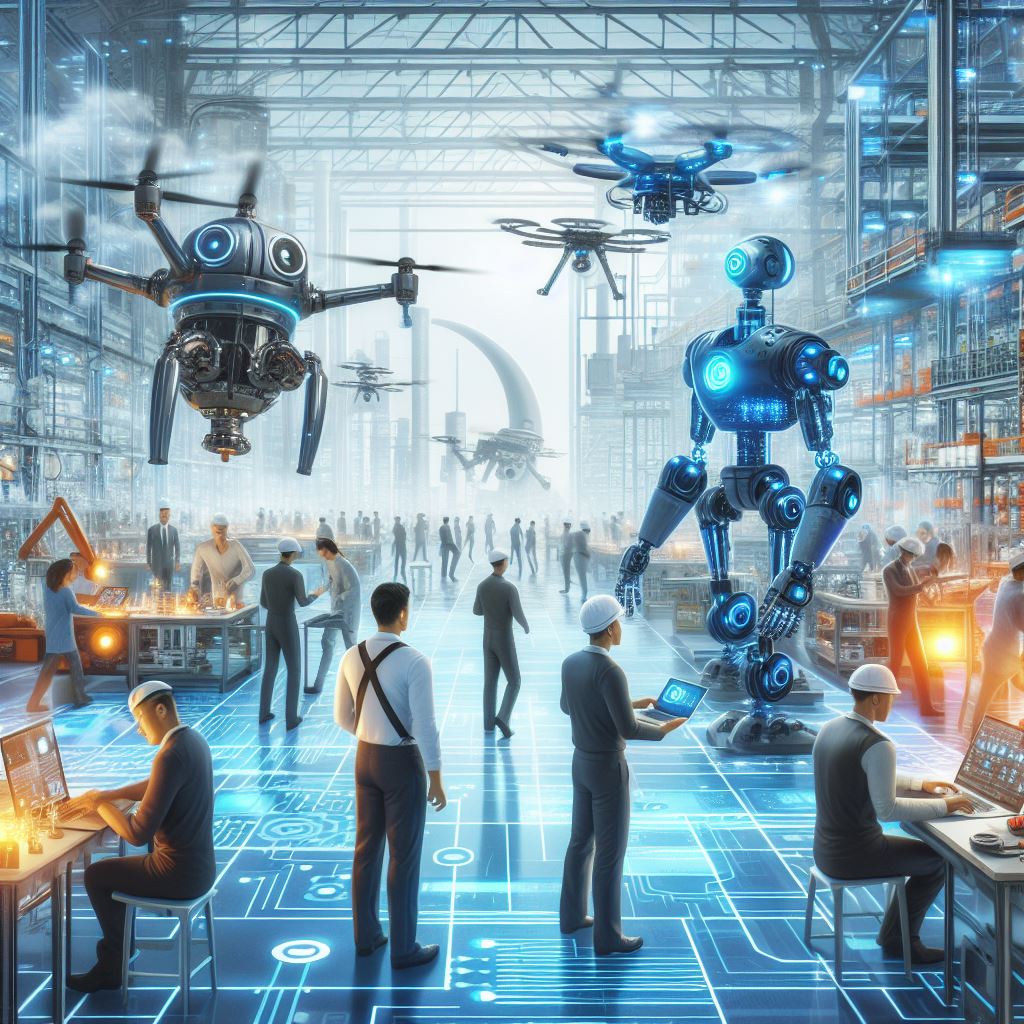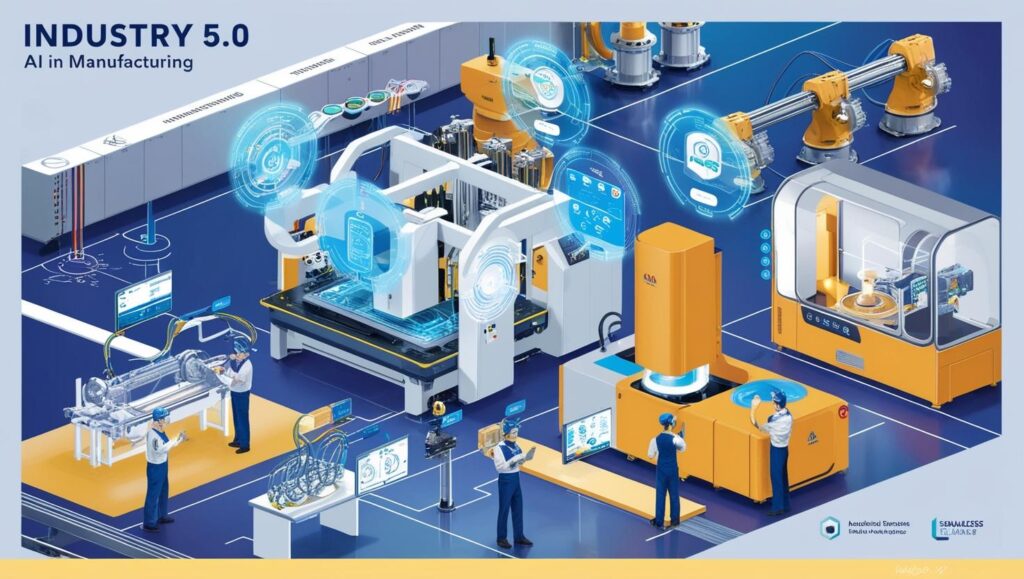As the manufacturing landscape continues to evolve, the United States is stepping confidently into the era of Industry 5.0—a paradigm that places human-machine collaboration at the forefront. Unlike its predecessor, Industry 4.0, which prioritized automation and operational efficiency, Industry 5.0 emphasizes personalization, resilience, and human-centric innovation.
Fueled by advancements in Artificial Intelligence (AI), Collaborative Robots (Cobots), and a rising demand for customized production, the U.S. Industry 5.0 market is poised for significant growth over the coming years.

From Automation to Augmentation: The Shift in Focus
Industry 4.0 introduced automation, robotics, and real-time data analytics to drive productivity. But Industry 5.0 is a step beyond—it’s about augmenting human capabilities, not replacing them. In the U.S., this shift is reshaping how manufacturers design processes, engage workers, and deliver products to consumers.
The focus has turned toward mass customization, worker empowerment, and intelligent technologies that enhance rather than eliminate the human role. This evolution is being accelerated by both market demands and government initiatives aimed at revitalizing American manufacturing through innovation and workforce development.
AI: The Engine of Intelligent Manufacturing
Artificial Intelligence is at the heart of the Industry 5.0 revolution in the U.S. manufacturing sector. From predictive maintenance and quality control to supply chain optimization, AI enables data-driven decisions that improve efficiency while reducing waste and downtime.
- U.S.-based manufacturers are leveraging AI to:
- Detect defects in real time using computer vision
- Anticipate production bottlenecks
- Forecast inventory needs
- Streamline customization for end-users
These capabilities support a more agile and responsive manufacturing environment—one where customer-specific needs can be met without compromising speed or cost-efficiency.
Cobots: Enabling Safe and Flexible Human-Robot Collaboration
Collaborative Robots (Cobots) are gaining traction across U.S. manufacturing floors, particularly in small- to mid-sized enterprises (SMEs) looking to scale operations without sacrificing flexibility or workforce safety.
Unlike traditional industrial robots, cobots are designed to work safely alongside humans, taking over repetitive or hazardous tasks while allowing workers to focus on complex, value-added responsibilities. Their benefits include:
- Fast deployment and easy programming
- Reduced workplace injuries
- Adaptability across different production lines
- Improved employee satisfaction and retention
Cobots embody the core philosophy of Industry 5.0: technology that complements human intelligence and dexterity.
Download PDF Brochure @ https://www.marketsandmarkets.com/pdfdownloadNew.asp?id=35376359
Customization: The New Competitive Advantage
One of the most compelling drivers of Industry 5.0 in the U.S. is the shift toward personalized products at scale. Consumers now expect tailored experiences, whether in electronics, automotive, healthcare, or fashion. Industry 5.0 makes this possible by integrating digital tools and flexible manufacturing systems that support small-batch and individualized production.
Technologies like 3D printing, digital twins, and real-time data analytics enable manufacturers to adapt quickly to customer preferences without incurring traditional costs or delays. For U.S. firms, this presents a competitive edge in high-value, low-volume production segments.
Market Outlook and Opportunities
United States (USA) Industry 5.0 Market worth $65.1 billion by 2029, driven by:
- Increased investment in smart factory technologies
- Rising demand for skilled workers and reskilling programs
- Government incentives supporting digital transformation
- Cross-industry applications, from aerospace to consumer goods
States with strong manufacturing hubs—like Michigan, Ohio, and Texas—are already seeing increased deployment of cobots and AI platforms, particularly among automotive and industrial equipment producers.

Human-Centric, Sustainable, and Resilient
At its core, Industry 5.0 also responds to the broader call for sustainability and human well-being. U.S. manufacturers are rethinking how operations impact not just the bottom line, but the environment and society. Technologies being adopted are increasingly evaluated for their ability to reduce emissions, conserve energy, and create inclusive workplaces.
By integrating sustainability, resilience, and human empowerment into the manufacturing model, Industry 5.0 is transforming how the U.S. competes in the global economy.
Conclusion: Building the Future of American Manufacturing
The rise of Industry 5.0 in the U.S. represents more than a technological upgrade—it signals a cultural and strategic shift. As AI, cobots, and customization tools become mainstream, manufacturers are discovering that productivity and personalization can coexist—and that people remain central to progress.
With strong infrastructure, innovation ecosystems, and a skilled workforce, the U.S. is well-positioned to lead the global charge into Industry 5.0.
Top industry 5.0 Companies are :
The industry 5.0 market includes significant Tier I and II players such as ABB (Switzerland), Honeywell International Inc. (US), 3D Systems (US), Rockwell Automation (US), Siemens (Germany), Emerson Electric Co (US), Oracle (US), Alphabet Inc. (US), and SAP (US). The report also covers various startup players such as River Logic Inc. (US), Rapid Shape GmbH (Germany), Breeze Technologies (Germany), and others.